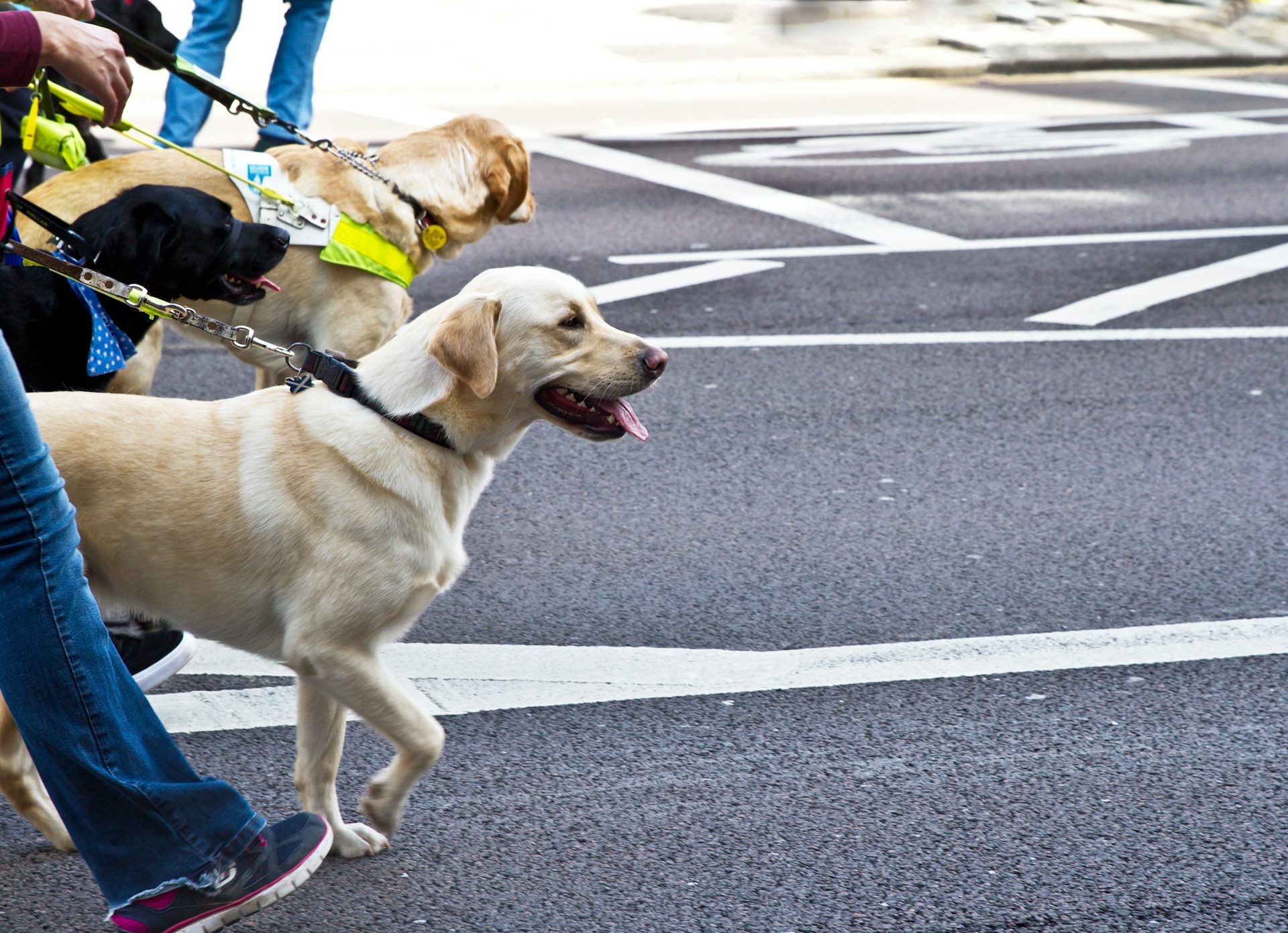Guide dogs are incredible companions for people who are blind or visually impaired, offering independence and safe navigation. A common question is, “How Do Guide Dogs Know Where They Are Going?”. The answer lies in a combination of intensive training, practiced routes, and a strong partnership with their handler.
Guide dogs don’t inherently know every location. Their skill comes from rigorous training and repeated practice.
The Foundation: Rigorous Training
Before learning specific routes, guide dogs undergo extensive training to master basic obedience, street safety, and obstacle avoidance. This training is crucial for their ability to guide a person safely.
Obstacle Identification and Response
A key aspect of guide dog training is learning to identify and react to obstacles. Consider a fallen tree branch blocking a path.
- Small Obstacles: The dog may carefully guide the person around it.
- Large Obstacles: The dog will block the person’s path, indicating a hazard.
The person then needs to assess the situation and work with the dog to find a safe alternative route. Obstacles can include seemingly minor things like steps or curbs.
Curb Awareness and Safe Stops
Guide dogs are trained to stop at curbs, signaling to their handler that they have reached the edge of the sidewalk. This allows the person to assess traffic conditions and determine when it’s safe to cross.
Route Memorization Through Practice
Guide dogs learn specific routes through repetition and practice. Just like a person learns the way from home to work, a guide dog memorizes common routes used by their handler.
Familiar Destinations
Training focuses on frequently visited locations, such as:
- Home to nearby shops
- Home to a bus stop
- Routes within the workplace
The dog learns the turns, landmarks, and potential obstacles along these routes.
The Crucial Role of the Handler
While the dog is essential for safe navigation, the handler plays an equally vital role.
Direction and Decision-Making
The guide dog relies on the handler to provide direction. The handler must know the desired destination and give clear commands.
Assessing Traffic Conditions
Contrary to popular belief, guide dogs don’t determine when it’s safe to cross the road. The handler listens to the surrounding traffic and makes the decision to cross. The dog then follows the handler’s command.
Teamwork and Communication
The success of a guide dog team depends on effective communication and trust. The handler needs to be able to interpret the dog’s signals and make informed decisions, while the dog needs to trust the handler’s commands.
Beyond Route Learning: Intelligent Disobedience
Guide dogs also learn “intelligent disobedience,” which means they may disobey a command if following it would put their handler in danger. This demonstrates their ability to assess situations and prioritize safety.
Example of Intelligent Disobedience
If a handler commands the dog to cross the street but the dog sees an approaching car, it may refuse to move forward, protecting the handler from potential harm.
Conclusion
Guide dogs are not simply robots following pre-programmed routes. They are intelligent, highly trained animals that work in partnership with their handlers to navigate the world safely. Their knowledge comes from a combination of rigorous training, route memorization, and a strong bond with their human companion. Understanding the intricacies of this partnership provides a deeper appreciation for the incredible abilities of these canine companions.
